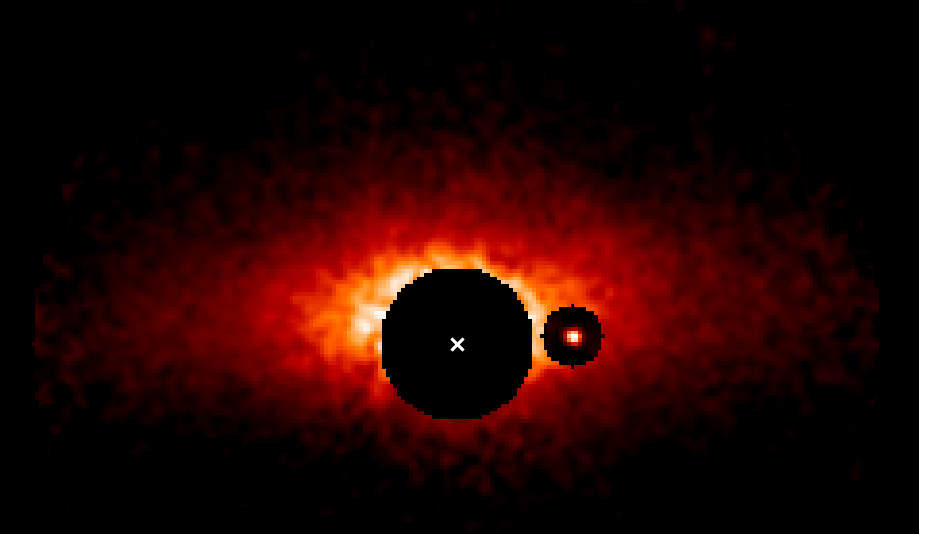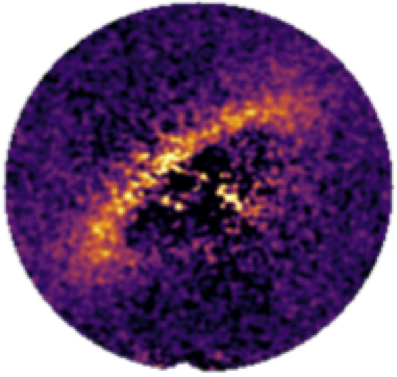Debris Disk Morphology and Composition
Debris Disks GPI
During my PhD I led two observational studies of debris disks, based on data from the Gemini Planet Imager's polarimetry mode. Because the disk-scattered light is polarized and the direct starlight is not, GPI's polarimetry mode can reject the unpolarized starlight to reveal a polarized disk beneath, a technique known as polarimetric differential imaging (PDI). In my first study I used PDI to image the debris disk of Beta Pictoris, as well as the directly imaged planet.

In this GPI image of the disk we see an image of the nearly edge-on disk in polarized intensity, where the dust from the disk is extremely forward-scattering. Also overlaid on top is an image of the directly imaged planet Beta Pictoris b, seen in total intensity in the same dataset. In this study we found that the morphology of the disk could not be completely explained by the known directly imaged planet, suggesting that there could be another unseen planet in the system perturbing the disk. Link: Millar-Blanchaer et al. 2015.
In a second study, I looked at the morphology of the disk around HD 157587 and demonstrated that subtle asymmetries in the disk brightness distribution could be explained by a stellocentric offset. This offset could be well explained by an unseen planet on an eccentric orbit.

In this image of the HD 157587 debris disk, the lower left side of the disk is slightly brighter than the upper right side of the disk, suggesting a stellocentric offset, possibly caused by an unseen planet. Link: Millar-Blanchaer et al. 2016.
I am now extending my debris disk work to a new disk observed as part of the Gemini Large and Long Program devoted to detailed characterization of debris disks (PI: Christine Chen). By leveraging multi-wavelength observations as well as adapting my fitting code to provide empirical scattering phase functions, I hope to begin to put constraints on the debris disk dust properties (such as size, porosity and composition). This is a work in progress and I hope to have new results to report on soon!
Debris Disk Composition with JWST
The James Webb Space Telescope (JWST) is set to launch in 2021 and will offer new direct imaging capabilities beyond what is currently available on the ground. JWST’s coronagraphic modes will allow us to explore wavelength regimes inaccessible from the ground (such as water and ice spectroscopic features), and provide direct-imaging detection limits down to Saturn-mass planets around the nearest stars. In 2017, I took on the role of co-Lead of the debris disk component of a now-accepted JWST Early Release Science proposal (PI: Sasha Hinkley). In this program, we have planned observations of both a directly imaged exoplanet and a debris disk in order to demonstrate the instrument’s capabilities while delivering new and exciting science. The debris disk component, which accounts for roughly one third of the total awarded ~40 hours, will image the HR 4796A disk in scattered light, to search for signs of water ice in the disk, and in thermal emission at wavelengths inaccessible from the ground. I plan to use the expertise I gain with these observations to begin a broader survey for ice in debris disks in order to understand its prevalence in the disk population as a whole.
